We have recently had two Steinway grand pianos in our workshop for restoration and both have interesting details to share about the restoration process. Here at the Piano Shop Bath we pride ourselves on having an expert technician team who are able to carry out the most comprehensive restorations possible. We wrote a previous blog about the excellent work our polisher Phil had been undertaking for a Steinway model O; this polishing is now complete and it’s now with the technicians for a complete action overhaul. You can see from the picture how this also coincided with another Steinway piano being worked on at the same time. This black Steinway model O yields some interesting design differences when sat next to the rosewood Steinway model O.
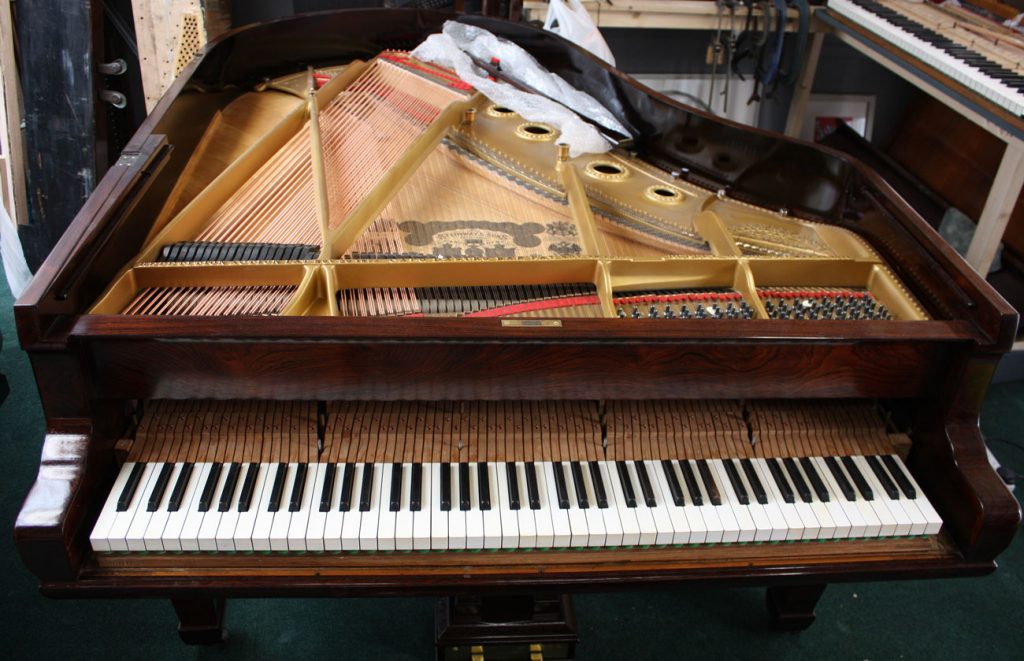

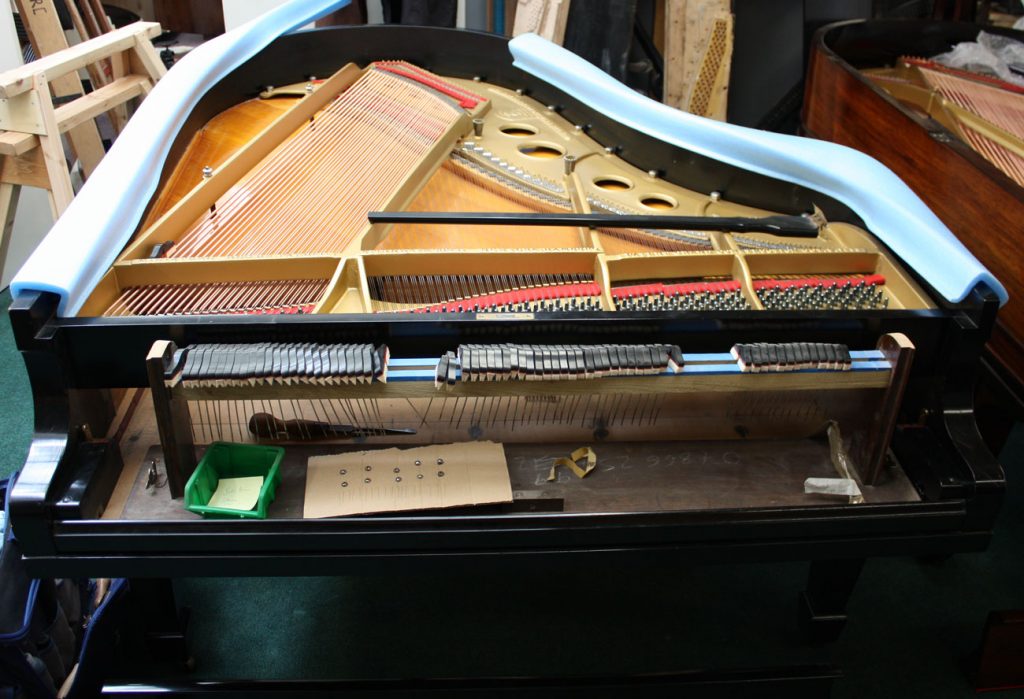

The two pianos have slightly different design elements and this is very apparent in the cast iron frame. The rosewood model O has a cross frame design as opposed to the simpler design seen on the black model O. This cross frame feature is an older design and slightly more complicated to manufacture. It indicates that the rosewood model O is an older piano and that at some point the design of the frame was simplified in line with what you see on most Steinway pianos today. A check on the serial numbers show that the black model O was manufactured in 1919, while the rosewood model O was manufactured earlier.
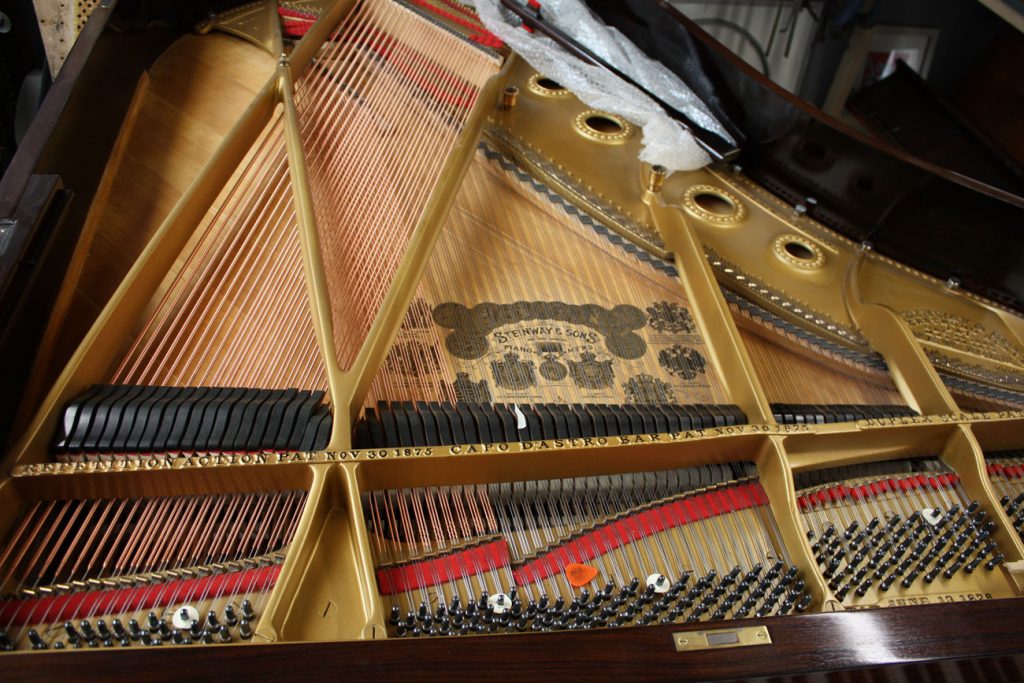



For the black Steinway model O, the customer wanted different hammers to produce a much softer tone. Traditionally Steinway pianos made in Hamburg have used Renner parts for the action, while in recent years the New York Steinway factory manufactured their own action parts. At the customer’s request we have sourced particular hammers produced by Abel. Abel are well respected German company that have built up a strong reputation for producing high quality piano hammers for the industry.
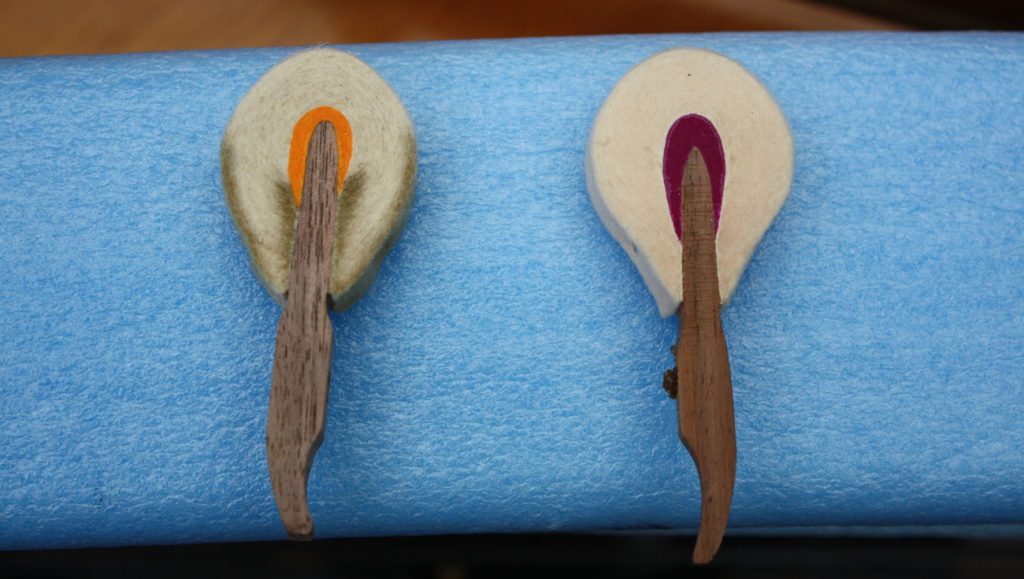

The Abel hammers chosen for this restoration have a much less compact wool and a rougher overall grain. You can see the side by side comparison in the pictures below, the Abel hammer with orange stripe, the original hammer with a purple stripe. The original hammer has a much smoother grain and more compact appearance.
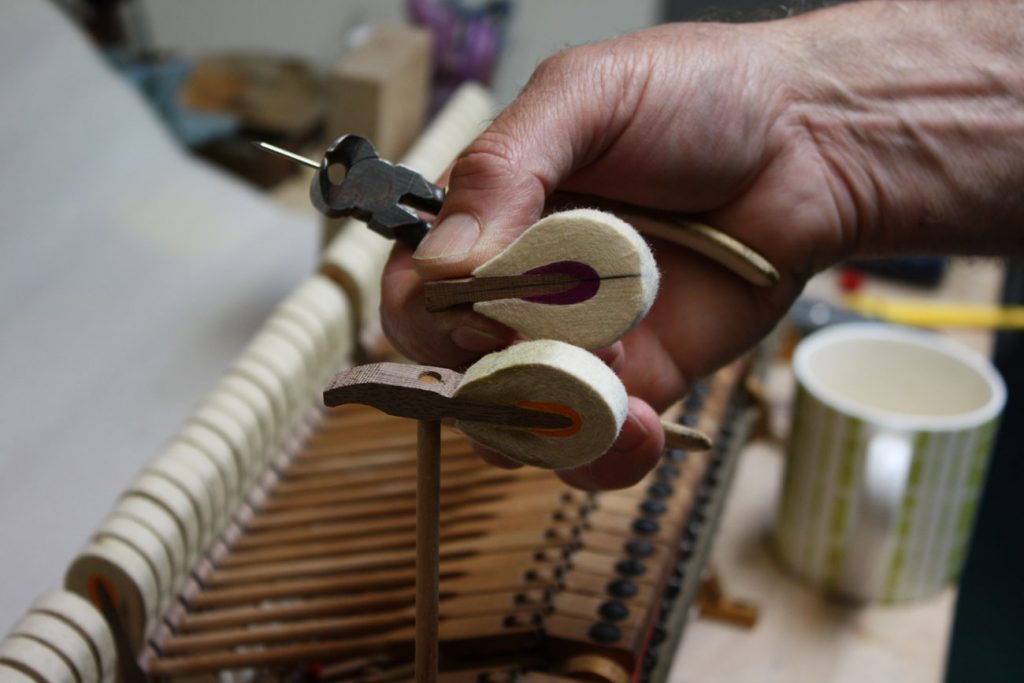

With a more compact, harder hammer the piano will produce a more strident tone. With softer, less compact hammers the resulting tone will be more mellow. If you imagine striking a gong with an all wood stick and then a wool coated drumstick, you can instantly picture the sound difference that would create. The difference in tone is much more subtle when replacing different piano hammers, but the analogy helps to understand what is going on at a micro level when those different grades of wool are hitting the piano strings.



